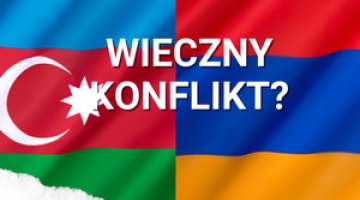The end of politics in Armenia
On 5 March Gagik Tsarukian, one of the richest Armenian oligarchs and the founder and leader of Prosperous Armenia, the largest party outside the coalition government, announced that he was ceasing his political activity. Less than three weeks before, he had withdrawn from organising mass demonstrations which Prosperous Armenia - which itself was part of the establishment - had planned to hold together with opposition groups at the end of February with the intention of seizing power. Tsarukian’s resignation was the result of blackmail by the ruling team; they revealed that he owed multi-billion debts to the treasury, and also threatened to deprive him of his parliamentary mandate. Many members of Prosperous Armenia left the party in the wake of Tsarukian, including some of its parliamentary deputies.
In the short term, the quashing of Prosperous Armenia will strengthen the government camp, particularly President Serzh Sargsian. But in the long run – possibly before the parliamentary elections in 2017 and presidential elections in 2018 – it may contribute to the weakening of the government’s legitimacy, and threaten social and political stability.
A strong elite
The political neutralisation of Prosperous Armenia can be seen as a success for the government, which has put an end to a potentially dangerous scenario in which part of the establishment formed an anti-government alliance with the opposition. Unlike other opposition parties, Prosperous Armenia had significant resources that could have been used to mobilise the public and part of the elite against the ruling camp. From the establishment’s point of view, the threat had intensified over the last six months, with the start of Tsarukian’s opposition activities and his cooperation with the Armenian National Congress (ANC) and the Heritage party, which aim to overthrow Sargsian and dismantle the oligarchic political-economic system in Armenia.
The break-up of the opposition will strengthen Sargsian’s grip on the country and the Republican Party of Armenia (RPA) which he leads. He has proved that he is able to discipline even the richest oligarch, who had significant influence on the structures of the state and enjoyed the support of the former President Robert Kocharian, another important oligarch. Kocharian used to be Sargsian’s patron, but it seems the current president has managed to make himself independent of his predecessor.
According to press reports, Tsarukian had unsuccessfully courted Moscow’s support for his plan to seize power. The failure of these attempts may therefore demonstrate that the ruling team is meeting the expectations of the Kremlin – another testament to the strong position of the current establishment.
No political alternatives
The consolidation of power in the hands of the president and his party is going hand in hand with the reduction of political pluralism in Armenia. This is due to the ruling team’s authoritarian methods, but also to the weakness and fragmentation of the opposition groups, which have been marginalised as a result of their failures in the presidential, parliamentary and local government elections over the last three years (together the ANC and Heritage hold about 10% of the seats in parliament).
The geopolitical situation is serving to maintain the status quo. The unresolved Karabakh conflict gives the country the feeling of a permanent state of emergency, which the authorities use as an excuse for the difficult situation, and also to strengthen their own legitimacy. The importance of the Karabakh factor has increased over the last year, together with the most serious intensification in the last twenty years of hostilities between Armenia and Karabakh against Azerbaijan (during this period around 60 people have died in mutual exchanges of fire). In addition, Armenia’s dependence on Russia in the political, economic and security spheres, as well as its membership in the Eurasian Economic Union, significantly limit the country’s room for manoeuvre. The opposition is therefore finding it difficult to put forward any alternative paths for development and policy.
Social discontent
The stability of the political scene increasingly contrasts with growing public dissatisfaction at the situation in the country. The regional isolation of Armenia, the oligarchic structure of the economy and the high levels of corruption rule out any hope that the country can overcome its economic stagnation. The authorities’ actions are limited to everyday administration and ‘patching up holes’, primarily by increasing the financial burden imposed on society by means such as raising pension contributions, fines for traffic offenses, transport prices and increasing tax collection. The situation has been exacerbated by membership of the Eurasian Economic Union (since the beginning of this year), as Armenia has now become even more vulnerable to the ongoing economic downturn in Russia. This has contributed to the decline in the value of the local currency and a significant increase in commodity prices, which is a severe blow to an impoverished population (every third inhabitant of Armenia lives in poverty; the average per capita income does not exceed US$7700).
The increasing social frustration has been expressed in ever more frequent demonstrations and in a rise in criminality. The wave of demonstrations and riots after the massacre of an Armenian family by a Russian soldier this January proves that public order is fragile.
Traditionally, emigration to Russia was an important factor in discharging social tensions; tens of thousands of people used to go there every year for work. For these people and their families, it was often the only way to meet the minimum necessities of life (remittances from guest workers accounted for 21% of the country’s GDP). However, the downturn in the Russian market has forced many emigrants to return, and lowered the amount of money transfers from Russia by over half. In addition, Russia has banned re-entry onto Russian Federation territory to around 60,000 Armenian guest workers for having violated the migration laws, and according to estimates from Moscow as many as 180,000 Armenians may face a similar ban. This situation will increase the potential social instability in Armenia, of which the protests against the Russian ‘black list’ (held regularly since February) are a sign.
So far, some social discontent has been channelled into political activity, including by the opposition groups (there is a strong tradition of party rallies and demonstrations). But in the face of the break-up of the opposition and the closing off of political channels, this frustration will find other forms of expression – more scattered, but probably also more radical.
Another risk comes from the unfreezing of the Karabakh conflict. A further escalation of violence there could undermine the social and political order in Armenia.





